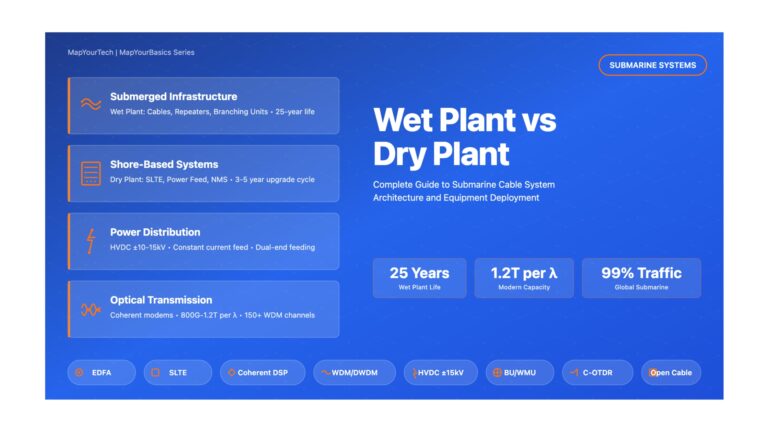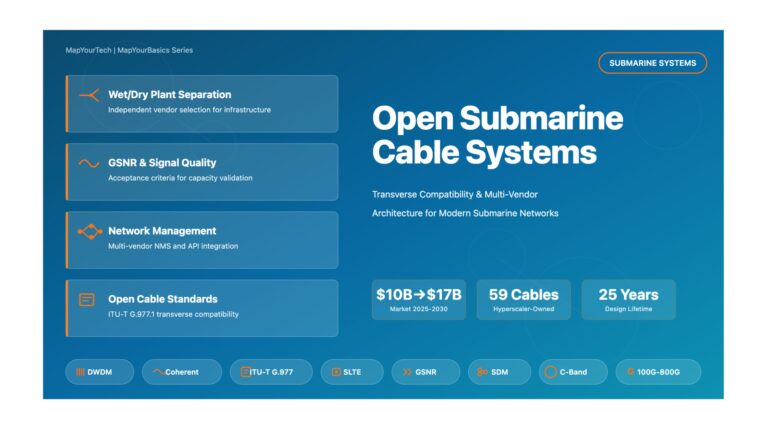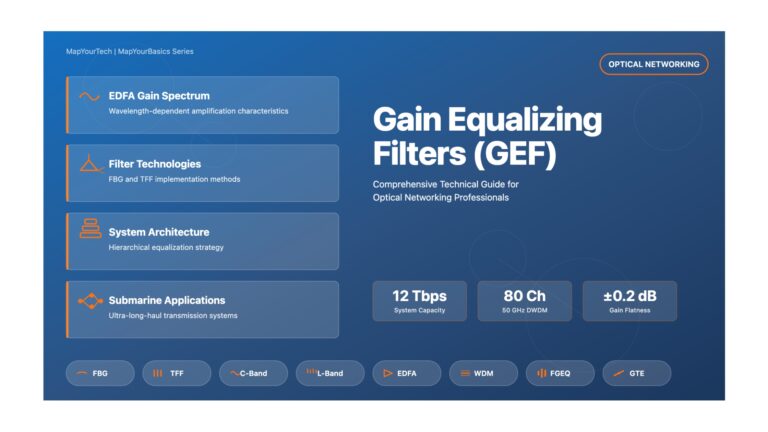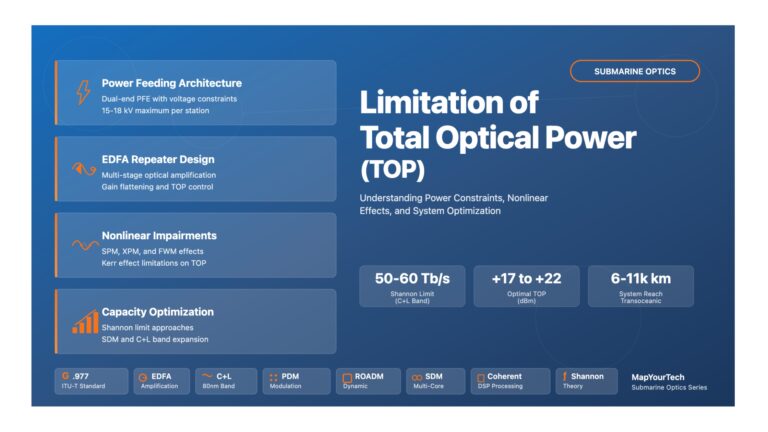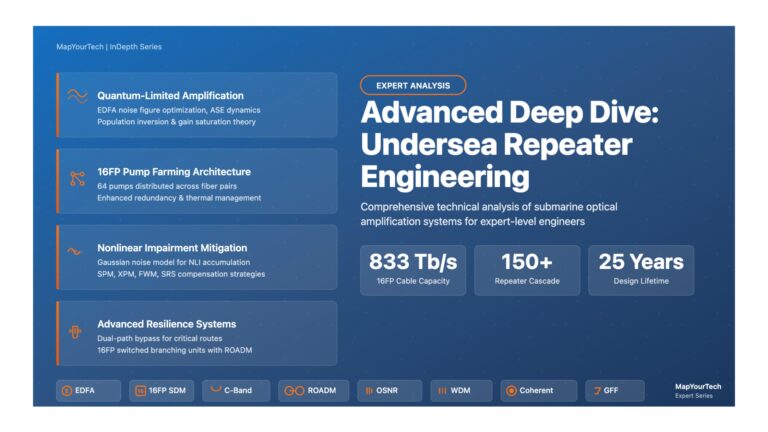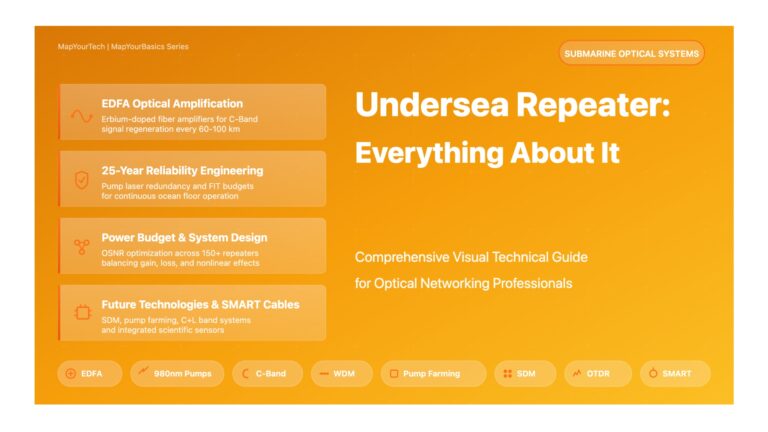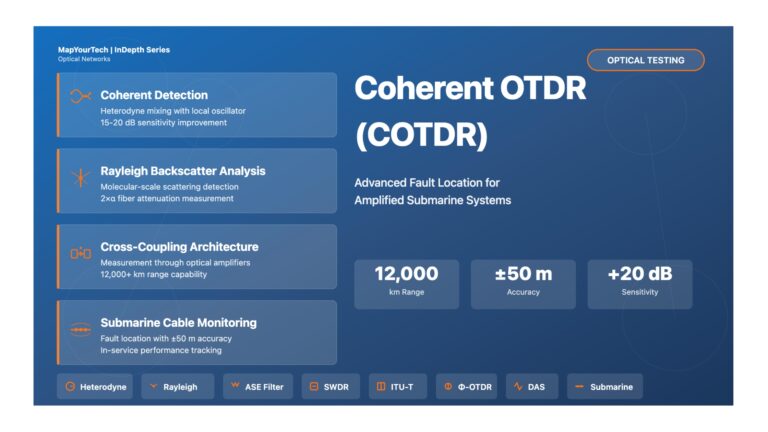Technical
Showing 41 - 50 of 573 results
Gain Equalizing Filters (GEF) – Comprehensive Visual Guide | MapYourTech Gain Equalizing Filters (GEF) Deep Dive Practical Information Based on...
-
Free
-
November 30, 2025
Wet Plant vs Dry Plant Equipment in Submarine Networks – Comprehensive Visual Guide Wet Plant vs Dry Plant Equipmentin Submarine...
-
Free
-
November 30, 2025
Gain Equalizing Filters (GEF) – Comprehensive Visual Guide | MapYourTech Overview of Gain Equalizing Filters (GEF) Comprehensive Technical Guide for...
-
Free
-
November 30, 2025
Submarine Cable Repair Operations – Comprehensive Visual Guide Overview of Submarine Cable Repair Operations Technical Guide Based on Industry Standards...
-
Free
-
November 30, 2025
Limitation of Total Optical Power (TOP) in Submarine Optical Networks – Comprehensive Visual Guide Limitation of Total Optical Power (TOP)...
-
Free
-
November 29, 2025
Advanced Deep Dive: Undersea Repeater Engineering Advanced Deep Dive: Undersea Repeater Engineering Comprehensive Technical Analysis of Submarine Optical Amplification Systems...
-
Free
-
November 29, 2025
Undersea Repeater: Everything About It – Comprehensive Visual Guide Undersea Repeater: Everything About It Comprehensive Visual Technical Guide for Optical...
-
Free
-
November 29, 2025
Coherent Optical Time Domain Reflectometry (COTDR) – Comprehensive Visual Guide Coherent Optical Time Domain Reflectometry (COTDR) Technical Guide for Optical...
-
Free
-
November 29, 2025
Bringing Undersea Repeater Technology to Terrestrial Applications: Challenges and Technological Aspects Bringing Undersea Repeater Technology to Terrestrial Applications: Challenges and...
-
Free
-
November 29, 2025
Explore Articles
Filter Articles
ResetExplore Courses
Tags
automation
ber
Chromatic Dispersion
coherent optical transmission
Data transmission
DWDM
edfa
EDFAs
Erbium-Doped Fiber Amplifiers
fec
Fiber optics
Fiber optic technology
Forward Error Correction
Latency
modulation
network automation
network management
Network performance
noise figure
optical
optical amplifiers
optical automation
Optical communication
Optical fiber
Optical network
optical network automation
optical networking
Optical networks
Optical performance
Optical signal-to-noise ratio
Optical transport network
OSNR
OTN
Q-factor
Raman Amplifier
SDH
Signal amplification
Signal integrity
Signal quality
Slider
submarine
submarine communication
submarine optical networking
Telecommunications
Ticker


